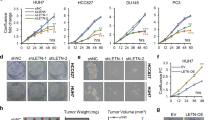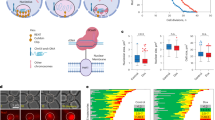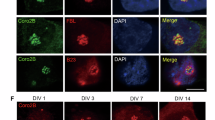Abstract
The ubiquitin-like molecule NEDD8 is essential for viability, growth and development, and is a potential target for therapeutic intervention. We found that the small molecule inhibitor of NEDDylation, MLN4924, alters the morphology and increases the surface size of the nucleolus in human and germline cells of Caenorhabditis elegans in the absence of nucleolar fragmentation. SILAC proteomics and monitoring of rRNA production, processing and ribosome profiling shows that MLN4924 changes the composition of the nucleolar proteome but does not inhibit RNA Pol I transcription. Further analysis demonstrates that MLN4924 activates the p53 tumour suppressor through the RPL11/RPL5-Mdm2 pathway, with characteristics of nucleolar stress. The study identifies the nucleolus as a target of inhibitors of NEDDylation and provides a mechanism for p53 activation upon NEDD8 inhibition. It also indicates that targeting the nucleolar proteome without affecting nucleolar transcription initiates the required signalling events for the control of cell cycle regulators.
This is a preview of subscription content, access via your institution
Access options
Subscribe to this journal
Receive 50 print issues and online access
$259.00 per year
only $5.18 per issue
Buy this article
- Purchase on SpringerLink
- Instant access to full article PDF
Prices may be subject to local taxes which are calculated during checkout







Similar content being viewed by others
References
Abidi N, Xirodimas DP . Regulation of cancer-related pathways by protein NEDDylation and strategies for the use of NEDD8 inhibitors in the clinic. Endocr Relat Cancer 2015; 22: T55–T70.
Enchev RI, Schulman BA, Peter M . Protein neddylation: beyond cullin-RING ligases. Nat Rev Mol Cell Biol 2014; 16: 30–44.
Watson IR, Irwin MS, Ohh M . NEDD8 pathways in cancer, Sine Quibus Non. Cancer Cell 2011; 19: 168–176.
Wang M, Medeiros BC, Erba HP, DeAngelo DJ, Giles FJ, Swords RT . Targeting protein neddylation: a novel therapeutic strategy for the treatment of cancer. Expert Opin Ther Targets 2011; 15: 253–264.
Liakopoulos D, Doenges G, Matuschewski K, Jentsch S . A novel protein modification pathway related to the ubiquitin system. EMBO J 1998; 17: 2208–2214.
Osaka F, Kawasaki H, Aida N, Saeki M, Chiba T, Kawashima S et al. A new NEDD8-ligating system for cullin-4A. Genes Dev 1998; 12: 2263–2268.
Petroski MD, Deshaies RJ . Function and regulation of cullin-RING ubiquitin ligases. Nat Rev Mol Cell Biol 2005; 6: 9–20.
Duda DM, Scott DC, Calabrese MF, Zimmerman ES, Zheng N, Schulman BA . Structural regulation of cullin-RING ubiquitin ligase complexes. Curr Opin Struct Biol 2011; 21: 257–264.
Harper JW, Tan MK . Understanding cullin-RING E3 biology through proteomics-based substrate identification. Mol Cell Proteomics 2012; 11: 1541–1550.
Duncan K, Schafer G, Vava A, Parker MI, Zerbini LF . Targeting neddylation in cancer therapy. Future Oncol 2012; 8: 1461–1470.
Soucy TA, Smith PG, Milhollen MA, Berger AJ, Gavin JM, Adhikari S et al. An inhibitor of NEDD8-activating enzyme as a new approach to treat cancer. Nature 2009; 458: 732–736.
Brownell JE, Sintchak MD, Gavin JM, Liao H, Bruzzese FJ, Bump NJ et al. Substrate-assisted inhibition of ubiquitin-like protein-activating enzymes: the NEDD8 E1 inhibitor MLN4924 forms a NEDD8-AMP mimetic in situ. Mol Cell 2010; 37: 102–111.
Lin JJ, Milhollen MA, Smith PG, Narayanan U, Dutta A . NEDD8-targeting drug MLN4924 elicits DNA rereplication by stabilizing Cdt1 in S phase, triggering checkpoint activation, apoptosis, and senescence in cancer cells. Cancer Res 2010; 70: 10310–10320.
Blank JL, Liu XJ, Cosmopoulos K, Bouck DC, Garcia K, Bernard H et al. Novel DNA damage checkpoints mediating cell death induced by the NEDD8-activating enzyme inhibitor MLN4924. Cancer Res 2013; 73: 225–234.
Lempiainen H, Shore D . Growth control and ribosome biogenesis. Curr Opin Cell Biol 2009; 21: 855–863.
Kressler D, Hurt E, Bassler J . Driving ribosome assembly. Biochim Biophys Acta 2010; 1803: 673–683.
Montanaro L, Trere D, Derenzini M . Nucleolus, ribosomes, and cancer. Am J Pathol 2008; 173: 301–310.
Andersen JS, Lyon CE, Fox AH, Leung AK, Lam YW, Steen H et al. Directed proteomic analysis of the human nucleolus. Curr Biol 2002; 12: 1–11.
Fox AH, Lam YW, Leung AK, Lyon CE, Andersen J, Mann M et al. Paraspeckles: a novel nuclear domain. Curr Biol 2002; 12: 13–25.
Andersen JS, Lam YW, Leung AK, Ong SE, Lyon CE, Lamond AI et al. Nucleolar proteome dynamics. Nature 2005; 433: 77–83.
Hernandez-Verdun D . Nucleolus: from structure to dynamics. Histochem Cell Biol 2006; 125: 127–137.
Greco A . Involvement of the nucleolus in replication of human viruses. Rev Med Virol 2009; 19: 201–214.
Boulon S, Westman BJ, Hutten S, Boisvert FM, Lamond AI . The nucleolus under stress. Mol Cell 2010; 40: 216–227.
Rubbi CP, Milner J . Disruption of the nucleolus mediates stabilization of p53 in response to DNA damage and other stresses. EMBO J 2003; 22: 6068–6077.
Perry RP, Kelley DE . Inhibition of RNA synthesis by actinomycin D: characteristic dose-response of different RNA species. J Cell Physiol 1970; 76: 127–139.
Donati G, Peddigari S, Mercer CA, Thomas G . 5S ribosomal RNA is an essential component of a nascent ribosomal precursor complex that regulates the Hdm2-p53 checkpoint. Cell Rep 2013; 4: 87–98.
Horn HF, Vousden KH . Cooperation between the ribosomal proteins L5 and L11 in the p53 pathway. Oncogene 2008; 27: 5774–5784.
Vlatkovic N, Boyd MT, Rubbi CP . Nucleolar control of p53: a cellular Achilles' heel and a target for cancer therapy. Cell Mol Life Sci 2014; 71: 771–791.
Golomb L, Volarevic S, Oren M . p53 and ribosome biogenesis stress: The essentials. FEBS Lett 2014; 588: 2571–2579.
Zhang Y, Lu H . Signaling to p53: ribosomal proteins find their way. Cancer Cell 2009; 16: 369–377.
Lindstrom MS . Emerging functions of ribosomal proteins in gene-specific transcription and translation. Biochem Biophys Res Commun 2009; 379: 167–170.
Baker NE . Developmental regulation of nucleolus size during Drosophila eye differentiation. PLoS One 2013; 8: e58266.
Lee LW, Lee CC, Huang CR, Lo SJ . The nucleolus of Caenorhabditis elegans. J Biomed Biotechnol 2012; 2012: 601274.
Sundqvist A, Liu G, Mirsaliotis A, Xirodimas DP . Regulation of nucleolar signalling to p53 through NEDDylation of L11. EMBO Rep 2009; 10: 1132–1139.
Barak Y, Juven T, Haffner R, Oren M . mdm2 expression is induced by wild type p53 activity. EMBO J 1993; 12: 461–468.
Xirodimas DP, Sundqvist A, Nakamura A, Shen L, Botting C, Hay RT . Ribosomal proteins are targets for the NEDD8 pathway. EMBO Rep 2008; 9: 280–286.
Chen D, Huang S . Nucleolar components involved in ribosome biogenesis cycle between the nucleolus and nucleoplasm in interphase cells. J Cell Biol 2001; 153: 169–176.
Olson MO, Dundr M . The moving parts of the nucleolus. Histochem Cell Biol 2005; 123: 203–216.
Lam YW, Lamond AI, Mann M, Andersen JS . Analysis of nucleolar protein dynamics reveals the nuclear degradation of ribosomal proteins. Curr Biol 2007; 17: 749–760.
Lohrum MA, Ludwig RL, Kubbutat MH, Hanlon M, Vousden KH . Regulation of HDM2 activity by the ribosomal protein L11. Cancer Cell 2003; 3: 577–587.
Zhang Y, Wolf GW, Bhat K, Jin A, Allio T, Burkhart WA et al. Ribosomal protein L11 negatively regulates oncoprotein MDM2 and mediates a p53-dependent ribosomal-stress checkpoint pathway. Mol Cell Biol 2003; 23: 8902–8912.
Kruse JP, Gu W . Modes of p53 regulation. Cell 2009; 137: 609–622.
Lindstrom MS, Jin A, Deisenroth C, White Wolf G, Zhang Y . Cancer-associated mutations in the MDM2 zinc finger domain disrupt ribosomal protein interaction and attenuate MDM2-induced p53 degradation. Mol Cell Biol 2007; 27: 1056–1068.
Macias E, Jin A, Deisenroth C, Bhat K, Mao H, Lindstrom MS et al. An ARF-independent c-MYC-activated tumor suppression pathway mediated by ribosomal protein-Mdm2 Interaction. Cancer Cell 2010; 18: 231–243.
Shen X, Gorovsky MA . Linker histone H1 regulates specific gene expression but not global transcription in vivo. Cell 1996; 86: 475–483.
White RJ . RNA polymerases I and III, non-coding RNAs and cancer. Trends Genet 2008; 24: 622–629.
Sobell HM . Actinomycin and DNA transcription. Proc Natl Acad Sci USA 1985; 82: 5328–5331.
Robledo S, Idol RA, Crimmins DL, Ladenson JH, Mason PJ, Bessler M . The role of human ribosomal proteins in the maturation of rRNA and ribosome production. RNA 2008; 14: 1918–1929.
Fumagalli S, Di Cara A, Neb-Gulati A, Natt F, Schwemberger S, Hall J et al. Absence of nucleolar disruption after impairment of 40S ribosome biogenesis reveals an rpL11-translation-dependent mechanism of p53 induction. Nat Cell Biol 2009; 11: 501–508.
Fumagalli S, Ivanenkov VV, Teng T, Thomas G . Suprainduction of p53 by disruption of 40S and 60S ribosome biogenesis leads to the activation of a novel G2/M checkpoint. Genes Dev 2012; 26: 1028–1040.
Derenzini M, Montanaro L, Trere D . What the nucleolus says to a tumour pathologist. Histopathology 2009; 54: 753–762.
Chadha GS, Blow JJ . Histone acetylation by HBO1 tightens replication licensing. Mol Cell 2010; 37: 5–6.
Miotto B, Struhl K . HBO1 histone acetylase activity is essential for DNA replication licensing and inhibited by Geminin. Mol Cell 2010; 37: 57–66.
Larance M, Kirkwood KJ, Xirodimas DP, Lundberg E, Uhlen M, Lamond AI . Characterization of MRFAP1 turnover and interactions downstream of the NEDD8 pathway. Mol Cell Proteomics 2012; 11: M111 014407.
Hannan RD, Drygin D, Pearson RB . Targeting RNA polymerase I transcription and the nucleolus for cancer therapy. Expert Opin Ther Targets 2013; 17: 873–878.
Drygin D, O'Brien SE, Hannan RD, McArthur GA, Von Hoff DD . Targeting the nucleolus for cancer-specific activation of p53. Drug Discov Today 2014; 19: 259–265.
Bywater MJ, Poortinga G, Sanij E, Hein N, Peck A, Cullinane C et al. Inhibition of RNA polymerase I as a therapeutic strategy to promote cancer-specific activation of p53. Cancer Cell 2012; 22: 51–65.
Fuhrman LE, Goel AK, Smith J, Shianna KV, Aballay A . Nucleolar proteins suppress Caenorhabditis elegans innate immunity by inhibiting p53/CEP-1. PLoS Genet 2009; 5: e1000657.
James A, Wang Y, Raje H, Rosby R, DiMario P . Nucleolar stress with and without p53. Nucleus 2014; 5: 402–426.
Sun XX, Wang YG, Xirodimas DP, Dai MS . Perturbation of 60S ribosomal biogenesis results in ribosomal protein L5- and L11-dependent p53 activation. J Biol Chem 2010; 285: 25812–25821.
Dai MS, Arnold H, Sun XX, Sears R, Lu H . Inhibition of c-Myc activity by ribosomal protein L11. EMBO J 2007; 26: 3332–3345.
Teng T, Mercer CA, Hexley P, Thomas G, Fumagalli S . Loss of tumor suppressor RPL5/RPL11 does not induce cell cycle arrest but impedes proliferation due to reduced ribosome content and translation capacity. Mol Cell Biol 2013; 33: 4660–4671.
Saville MK, Sparks A, Xirodimas DP, Wardrop J, Stevenson LF, Bourdon JC et al. Regulation of p53 by the ubiquitin-conjugating enzymes UbcH5B/C in vivo. J Biol Chem 2004; 279: 42169–42181.
Xirodimas D, Saville MK, Edling C, Lane DP, Lain S . Different effects of p14ARF on the levels of ubiquitinated p53 and Mdm2 in vivo. Oncogene 2001; 20: 4972–4983.
Tatham MH, Rodriguez MS, Xirodimas DP, Hay RT . Detection of protein SUMOylation in vivo. Nat Protoc 2009; 4: 1363–1371.
Pestov DG, Lapik YR, Lau LF . Assays for ribosomal RNA processing and ribosome assembly. Curr Protoc Cell Biol 2008, Chapter 22: Unit 22 11.
Liu G, Xirodimas DP . NUB1 promotes cytoplasmic localization of p53 through cooperation of the NEDD8 and ubiquitin pathways. Oncogene 2010; 29: 2252–2261.
Acknowledgements
We are grateful to Dr Yanping Zhang for providing the wild-type and mutant Mdm2 C305F MEFs, the Montpellier RIO Imaging facility and Stefano Fumagalli for critical reading of the manuscript. AB and AP are supported by an ANR (National Agency for Research) postdoctoral fellowship awarded to AB. The project in DPX laboratory was supported by ATIP/AVENIR and Marie Curie Career Integration (FP7) grants.
Author information
Authors and Affiliations
Corresponding author
Ethics declarations
Competing interests
PS was an employee of Millennium Pharmaceuticals at the start of the studies. The other authors declare no conflict of interest.
Additional information
Supplementary Information accompanies this paper on the Oncogene website
Supplementary information
Rights and permissions
About this article
Cite this article
Bailly, A., Perrin, A., Bou Malhab, L. et al. The NEDD8 inhibitor MLN4924 increases the size of the nucleolus and activates p53 through the ribosomal-Mdm2 pathway. Oncogene 35, 415–426 (2016). https://doi.org/10.1038/onc.2015.104
Received:
Revised:
Accepted:
Published:
Issue date:
DOI: https://doi.org/10.1038/onc.2015.104
This article is cited by
-
Pevonedistat (MLN4924): mechanism of cell death induction and therapeutic potential in colorectal cancer
Cell Death Discovery (2020)
-
NEDDylation promotes nuclear protein aggregation and protects the Ubiquitin Proteasome System upon proteotoxic stress
Nature Communications (2018)
-
The use of the NEDD8 inhibitor MLN4924 (Pevonedistat) in a cyclotherapy approach to protect wild-type p53 cells from MLN4924 induced toxicity
Scientific Reports (2016)
-
Nucleolus-derived mediators in oncogenic stress response and activation of p53-dependent pathways
Histochemistry and Cell Biology (2016)



